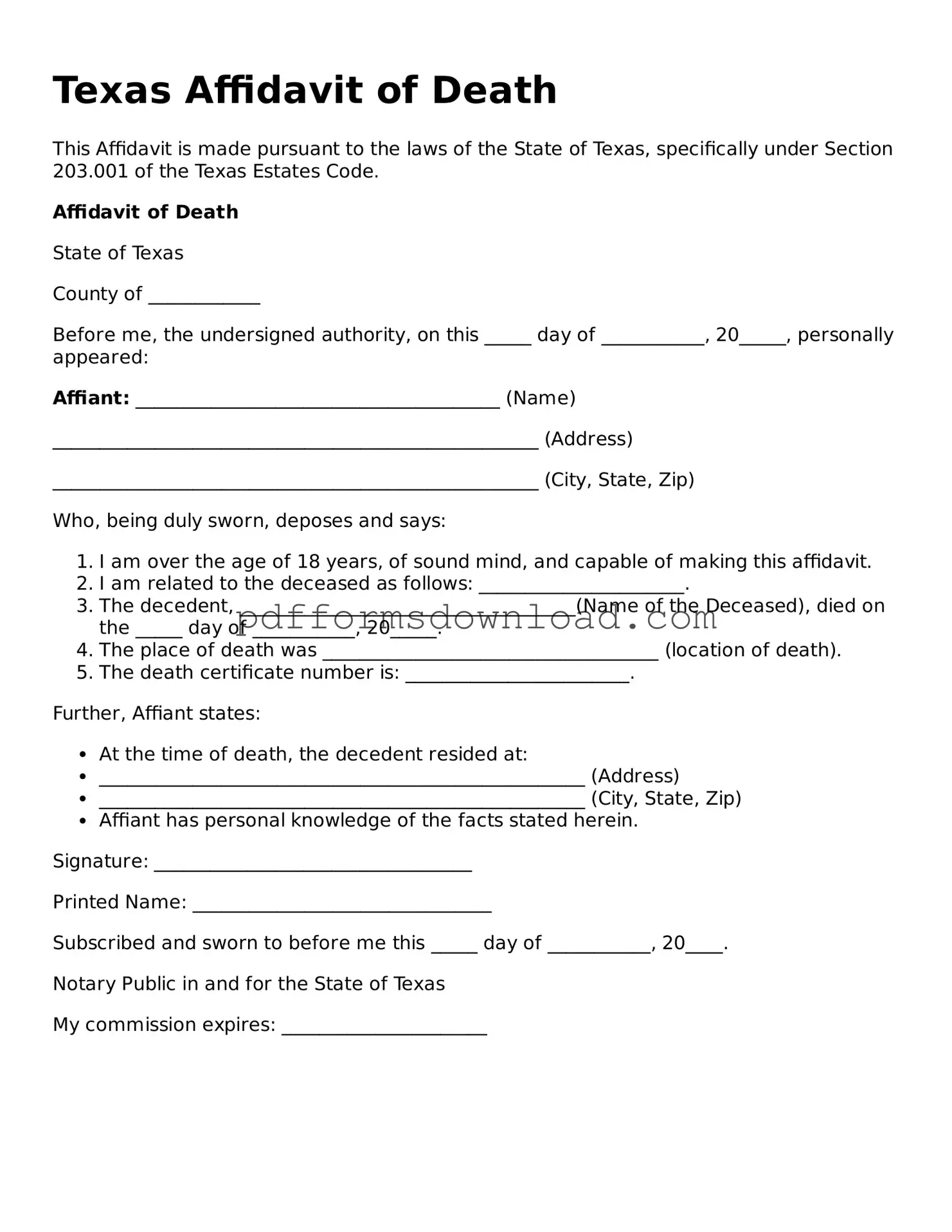What is a Texas Affidavit of Death form?
The Texas Affidavit of Death form is a legal document used to officially declare that an individual has passed away. This form is often necessary for settling the deceased's estate, transferring property, or addressing financial matters. It serves as a formal acknowledgment of death, which can be used in various legal and financial contexts.
Who can file a Texas Affidavit of Death?
Generally, any person who has knowledge of the deceased's death can file this affidavit. This typically includes family members, close friends, or legal representatives. It’s important that the person filing the affidavit can provide accurate information about the deceased and the circumstances of their passing.
What information is required on the form?
The Texas Affidavit of Death form requires several key pieces of information. This includes the full name of the deceased, their date of birth, the date of death, and the place of death. The form may also ask for details about the deceased's last residence and the relationship of the affiant (the person filing the affidavit) to the deceased. Accurate and truthful information is essential for the affidavit to be valid.
How is the Texas Affidavit of Death used?
This affidavit can be used in various situations. It is commonly required when transferring property ownership, closing bank accounts, or settling an estate. Once completed, the affidavit is typically filed with the county clerk’s office where the deceased lived. Some institutions may also require a certified copy of the affidavit for their records.
